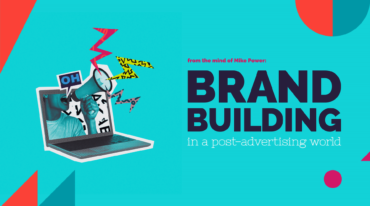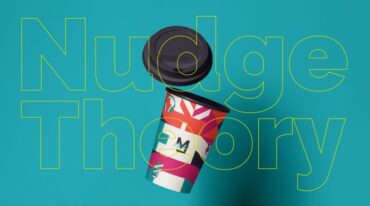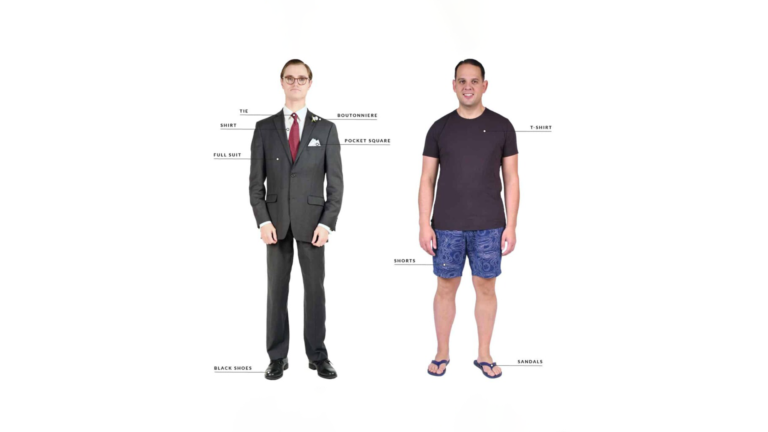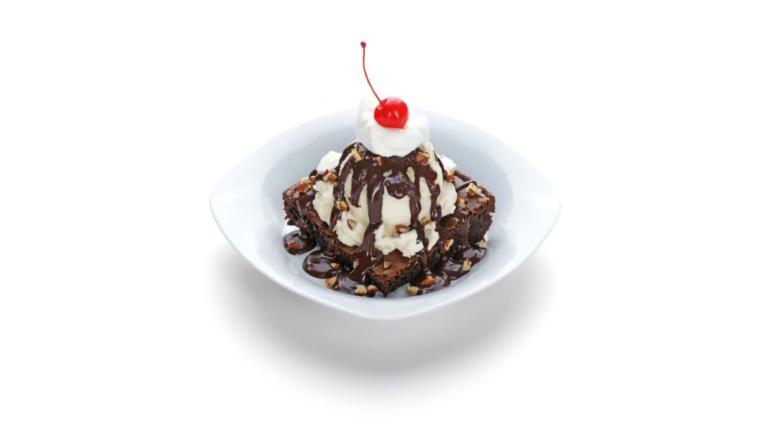In our last article, Brand Building in a Post-Advertising World, our Head of Strategy at Midfield – Mike Power – took us through a thought experiment. He asked us to consider what marketers would do if traditional advertising disappeared. While exploring the idea that they would be forced to rethink their approach to customer engagement, Mike made a compelling point. He suggested that there would be value in putting away traditional ads and changing our thinking to the ‘Brand as Studio’.
In the world of branding against a backdrop of the death of advertising, it purely means content that people want, that serves some kind of purpose and creates value.
(If you haven’t read the article yet, you should! You can find it here.)
When I first read this, what stuck in my mind was that last line about serving a purpose and creating value. At Midfield, we talk a lot about the importance of creating experiences at every touchpoint to help increase brand value and support business growth. However, as I read this line, I realized we’ve never done a deep dive into the theories and teachings which support Mike’s (and by extension, Midfield’s) position. I thought it would be interesting to give you a little background on one of the core behavioural theories which drive our agency’s rallying cry: “Experience. No Matter What.” and explain the ideas we use to help our clients find untapped value in their businesses.
So, let’s talk about the Peak-End Rule and how it can help your organization create value where it matters most – the bottom line.
What is Peak-End?
In cognitive psychology, The Peak-End Rule refers to how people evaluate the overall satisfaction of an experience (in this case, your brand experience) based on two key factors:
- The Peak – the most intense moment of engagement, and
- The End – the final moment of engagement.
It suggests that our memory of an experience is heavily influenced by these two moments and that they often carry more weight in determining our overall satisfaction than we realize.
The Peak-End Rule was first identified by psychologist Daniel Kahneman and his colleagues in the 90s while conducting a series of experiments to explore how people remember and evaluate their experiences. They found that participants often rated their general satisfaction based on their memory of the most intense moment, even if that moment was brief and occurred in the middle of the experience. Additionally, the overall duration can also play a role in how it is evaluated. According to Kahneman, a long experience is generally more favourable than a shorter one if it’s overall positive.
How does this translate to your brand?
The more you can consistently deliver a positive experience over time, the more likely a customer will return to your brand and recommend it (more about that later).
The Peak-End Rule is influenced by our expectations and how we compare the experience to similar ones in the past. If our expectations are high, we tend to be more critical and are less likely to be satisfied, even if the experience was objectively positive. On the other hand, if our expectations are low, we may be more satisfied, even if it was not as good as we had hoped.
It’s important to note that the Peak-End Rule is not a universal truth. Individual factors such as personality, mood, and context can all play a role in shaping our memories and opinions. Cultural and societal factors can also influence how experiences are evaluated, as the importance of different aspects can vary across cultures and communities. As marketers, we must remember that customer experience isn’t ‘one size fits all’. This is why personalizing every experience to a customer has become an important and emerging trend in brand strategy circles. Know that when you are reaching for the unexpected in your brand communication, you need to be well-researched, well-planned, and consider the important behavioural, cultural, and societal beliefs which form your target audience’s self-concept.
By understanding the cultural context of your customers, your organization can design experiences that are more relevant and satisfying, increasing the likelihood of positive memories and repeat purchases, while avoiding the pitfalls that can come when organizations push brand boundaries.
How does the Peak-End rule affect consumer behaviour?
The Peak-End rule has a significant impact on consumer purchasing behaviour, as it shapes how consumers perceive and remember their experiences with products and services. By understanding how the Peak-End rule works, companies can design their products and services in ways that are more likely to result in positive memories and returning customers. Organizations that aim to create memorable “peak” experiences for their audience can have a deep impact on the overall perception of their product or service, even if the average of the experience was not as high. Similarly, companies which aim to end the customer experience on a high note (such as a positive customer service interaction, a personalized follow-up email, or a special unexpected benefit), can help create a satisfying conclusion. This can improve overall satisfaction, increase the likelihood of repeat purchase and – dare we say it – even lead to a new loyal customer.
If you want to understand how memorable moments can help fashion a positive memory of the overall experience and create value, look no further than the example of the Magic Castle Hotel in Los Angeles.
Magic Castle Hotel is a 1950s apartment building which has been repurposed into a hotel, located one block from Hollywood Boulevard’s Walk of Fame. As hotels go, you could say it has an average aesthetic. It isn’t fancy, but the rooms are clean and the location is decent. Despite this, the hotel at one time was ranked as # 1 overall on TripAdvisor. Today sits at # 6 overall, outranking iconic LA hotspots like the Hotel Bel-Air, Four Seasons Hotel Los Angeles at Beverly Hills, and The Ritz-Carlton – iconic brands that are known for their top-shelf customer experience. How did they do it? By delivering on peak moments of ‘WOW’ and ending every guest interaction with positivity.
The experience that is most referenced on TripAdvisor is their Popsicle Hotline. A simple enough idea, but brilliantly executed. Guests lounging at their heated pool are invited to pick up a red phone, where someone answers “Popsicle Hotline” on the other end. They then order a popsicle flavour of their choice, which is immediately delivered on a silver tray by their concierge team wearing white gloves. All for free. WOW. They also have unlimited snacks, ice cream and drinks, as well as free breakfast and laundry service. Most importantly, their team is empowered and encouraged to provide guests with special perks whenever possible during the guest stay, such as free bus passes to Universal Studios, or purchasing the fixings for a guest’s favourite cocktail and having it delivered to their room (again, for free).
They are constantly looking to deliver positive guest experiences that sit outside what could ever be considered ‘expected’. This is what sets them apart from some of the best hotels in the world.
Magic Castle understands that the delivery of unexpected, personalized guest experiences is key to creating moments of ‘WOW’ in the minds of their guests. They know that these moments create an intangible – but very real – elevated value to their brand (and hotel) that wouldn’t exist otherwise. These experiences deliver value, which translates into big dollars and exposure for a hotel which would otherwise be ‘normal’. Because of this, Magic Castle’s nightly room rates are more than double the average for similar hotels in the area, and they are fully booked almost every night. Bottom line profitability and happy guests, Peak-End rule for the win!
So, aim to create an emotional connection with your audience by creating customer service, content, and digital and product experiences that resonate, surprise and delight.
At Midfield, we contend that these unforgettable moments of ‘WOW’ can have an impact beyond traditional customer/employee live engagement channels. Your brand can (and should) create Peak-End moments everywhere across your organization, both internally (employee engagement) and externally (customer experience, vendor programs).
For an example of the Peak-End rule hard at work in digital channels, consider how Wendy’s Restaurants is using Twitter to strengthen its brand voice and create regular unexpected moments of ‘WOW’ to great effect.

Wendy’s Twitter is well-known for its daring posts among young people, especially when interacting with other fast-food brands. They saw a chance to stand out on a platform lacking a clear hierarchy, unlike the real-life fast-food industry. Wendy’s have turned seemingly negative encounters into wins, by roasting competitors such as McDonald’s, Burger King, and Carl’s Jr., much to the public’s delight. Additionally, they now invite anyone to be roasted on #NationalRoastDay, giving witty responses to all. Despite criticism from other companies, Wendy’s still has many suitors who seek exposure from its massive 3.7 million followers. They buy into the adage that all press is good press, leaning into the cheeky undertones when building their content. So, herein lies the point: being roasted by Wendy’s is a fun and out-of-the-ordinary experience. But because they have been able to sustain this approach, Wendy’s has turned playful negativity into positive attention and unexpected moments, which has boosted their business. All thanks to a creative (non-traditional) use of the Peak-End rule.
This brings us full circle to Mike’s suggestion that Brands should see themselves as Studios, creating moments that serve some kind of purpose and create value. If you want to create purpose and value for people who are being bombarded with endless messages every day, then you need to design brand experiences that create unexpected and emotionally charged moments of ‘WOW’. Your customer will stand up, take notice, listen, and remember.
So, if you’re ‘buying what we’re selling’, then you’ll believe the Peak-End rule can have a significant impact on consumer purchasing decisions. You’ll also likely nod along when we tell you that by understanding how the Peak-End rule works, your organization can design its products, services, behaviours, and communication (brand experience) in a way that is more likely to result in positive memories, increased satisfaction, and purchase.
That sounds like a growth strategy to me, wouldn’t that be sweet?
Talk soon.
-R

